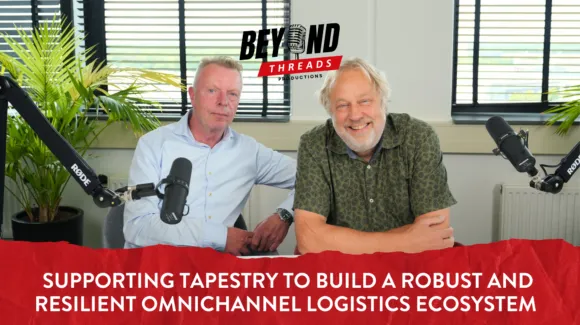An effective returns process is essential for successful brands and an important aspect of ensuring a positive customer experience. However, there is also a significant potential for waste in the returns process, impacting both brand profitability and the environmental impact of the fashion industry. So, how is the industry tackling this issue? Read on to explore the innovative ways in which companies in the fashion space are tackling returns-related waste and the benefits that such measures can bring to your brand.
Assessing the scale of the problem
With up to 40% of all e-commerce fashion orders being returned, returns can have a major financial impact on retailers. Research suggests that the cost of returns to retailers can be as much as 30% of total revenue. This is, in part, due to the large proportion of returns that remain unsold – whether due to wear, damage or styles going out of season. In fact, the European Environment Agency estimates that between 22% and 43% of all returned clothing purchased online ends up being destroyed.
Not only does this represent a significant loss to companies’ bottom lines, but this high volume of waste also has a serious impact on our environment. Of all unsold, returned clothing, only 25% is recycled, with the rest either being sent to landfill or incinerated. To address this, many in the fashion industry are implementing innovative and effective ways of minimising the financial and environmental costs of returns.
Tackling the source of returns
Companies can reduce the volume of returns by optimising supply chain oversight. For instance, improving data collection on returned items can help identify recurring issues with specific SKUs, such as faulty zippers or inaccurate sizing. Brands can then use this information to implement solutions like reviewing their manufacturing processes or providing more detailed sizing guides, leading to fewer returns.
Inaccurate sizing or fit is one of the most common reasons why customers return apparel purchases. Technology-based solutions such as AI sizing guides are driving significant improvements in this area. Applications such as Mirrorsize and TrueFit are helping customers make better-fitting apparel purchases and have been shown to reduce return rates by up to 50%.
Improvements in data collection can also help to streamline brands’ reverse logistics. Accurate information on product condition allows companies to quickly and effectively triage incoming returns according to whether they can be resold immediately or whether further action, such as repair or recycling, is required. Data is also important from the consumer’s perspective, as they need to know exactly what repairs have been carried out on pre-loved items. Data is therefore essential to facilitate the implementation of circular solutions.
Exploring repair and resale
Many items returned because of flaws or defects can be repaired and reintroduced to a company’s inventory. More and more brands, often with the help of specialist re-commerce partners, are investing in this approach, to reduce waste and increase profitability with regard to returns management.
Improved margins are not the only benefit of transitioning toward these kinds of circular supply chain processes. Research from the Renewal Workshop operations shows that brands can achieve an average reduction of 51.5% in carbon emissions by renewing an existing product instead of producing a new one, so the environmental and financial benefits environmental benefits of adopting such a model are very clear.
Even items that can’t be resold at full price can still retain value to brands. Some items, which are either out of season or have slight imperfections can be sold as ‘pre-loved’ at a discount. Otherwise, they can be acquired by other brands or initiatives focused on innovative repurposing. For instance, companies like Neem, a zero-waste UK menswear brand, buy returned items and waste from large retailers, recycle the fabric down to its fibres, and create new products.
This approach not only extends the life of materials but also aligns with sustainable practices. Industry giants are starting to invest more and more in these kinds of recycling methods. For example, Inditex is pioneering new types of recycled fibres, such as Infinna™, showcasing how waste materials can be transformed into valuable resources for the fashion market.
Unlocking the benefits of circularity in reverse logistics
There are many important benefits for companies to reduce their returns-related waste and transition towards more circular business models through better returns processes. Brands can significantly reduce the losses incurred through returns by repairing and reusing returned goods at full or reduced cost. At the same time, brands can reduce the environmental impact of their returns, enhancing their reputation and building customer loyalty. In addition, this approach has the advantage of putting brands in a better position to meet current and future environmental regulations, such as the Ecodesign for Sustainable Product Regulation (ESPR) – enabling more future-proof operations.
















